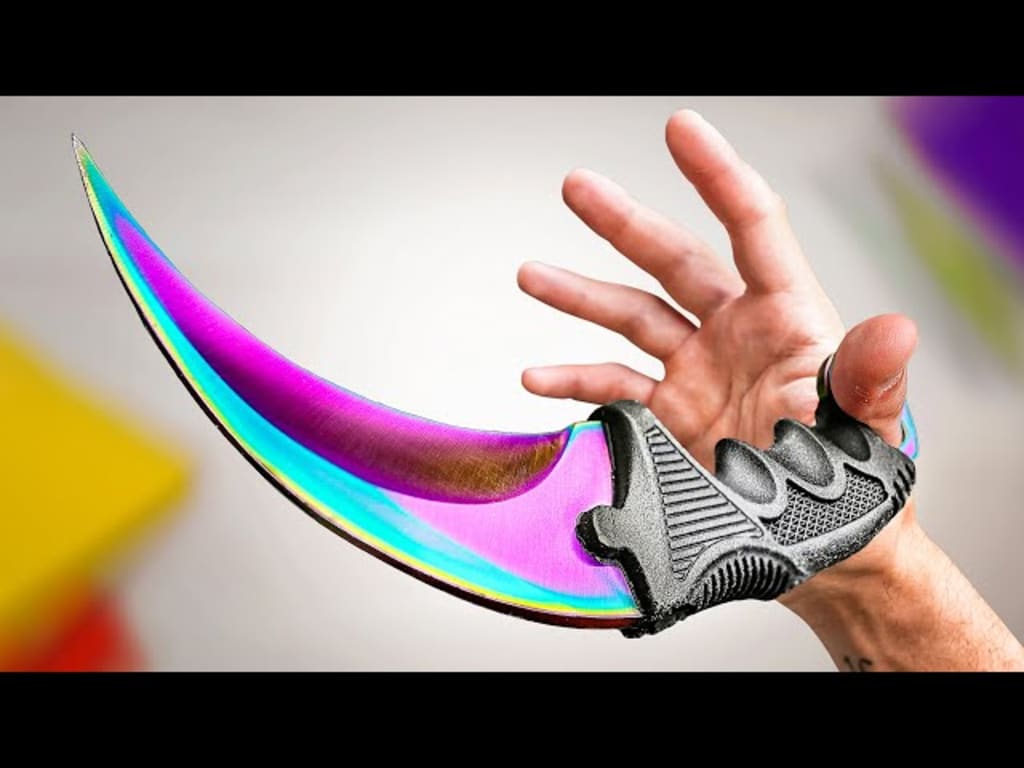Personal Protection: Exploring the World of Self-Defense Knives
Self-Defense Knives

Introduction
In an increasingly unpredictable world, personal safety has become a paramount concern for many individuals. One of the most practical and effective tools for self-defense is the knife. Compact, easy to carry, and versatile, self-defense knives can provide a significant advantage in dangerous situations. This article delves into the world of self-defense knives, exploring their history, types, features, legal considerations, and the best practices for carrying and using them.
The History of Self-Defense Knives
Ancient Origins
The use of knives for self-defense dates back to prehistoric times when early humans used sharpened stones and bones to protect themselves from predators and rivals. As metallurgy advanced, so did the design and effectiveness of knives. In ancient civilizations like Egypt, Greece, and Rome, knives were not only tools but also weapons used by soldiers and civilians alike for personal protection.
Medieval and Renaissance Eras
During the medieval period, daggers and short swords became the weapons of choice for personal defense. The rondel dagger, with its pointed tip and sturdy construction, was favored by knights and nobles. In the Renaissance era, the stiletto emerged as a popular self-defense weapon due to its slim profile and penetrating capabilities. These knives were easily concealed and could be quickly deployed in close-quarter combat.
Modern Developments
The 20th and 21st centuries have seen significant advancements in knife design and materials, leading to the development of specialized self-defense knives. Modern self-defense knives are designed with ergonomics, concealability, and effectiveness in mind. Tactical folding knives, fixed blade knives, and neck knives have all become popular choices for personal protection.
Types of Self-Defense Knives
Folding Knives
Folding knives, also known as pocket knives, are popular for their portability and ease of concealment. These knives feature a pivoting blade that folds into the handle, making them compact and safe to carry in a pocket or bag. Key features of folding knives include locking mechanisms (such as liner locks, frame locks, and axis locks), one-handed opening systems (thumb studs, flippers, and assisted opening), and durable handle materials (G-10, carbon fiber, and titanium).
Fixed Blade Knives
Fixed blade knives are known for their strength and reliability. Unlike folding knives, they do not have moving parts, which makes them more robust and easier to maintain. Fixed blade knives are typically carried in a sheath attached to a belt, boot, or around the neck. They come in various designs, including drop point, tanto, and spear point, each offering different advantages for self-defense scenarios.
Neck Knives
Neck knives are small fixed blade knives designed to be worn around the neck using a lanyard or chain. Their compact size and accessibility make them an excellent choice for discreet carry. Neck knives often feature a minimalist design with a simple handle and a blade optimized for quick deployment and close-quarter use. They are favored by those who need a secondary or backup self-defense tool.
Tactical Knives
Tactical knives are designed for military and law enforcement use, but they are also popular among civilians for self-defense. These knives are built to withstand harsh conditions and rigorous use. Tactical knives often feature serrated edges for cutting through tough materials, glass breakers, and sturdy grips for secure handling. Brands like Ka-Bar, Gerber, and SOG are well-known for their tactical knife offerings.
Features of Self-Defense Knives
Blade Shape and Edge
The shape and edge of a knife blade significantly impact its effectiveness in self-defense situations. Common blade shapes include:
Drop Point: A versatile blade with a strong tip, suitable for both slicing and thrusting.
Tanto: Known for its reinforced tip and straight edge, ideal for piercing hard materials.
Spear Point: Symmetrical blade with a central spine, excellent for thrusting and balanced cutting.
Clip Point: Features a concave curve on the back edge, providing a sharp and controllable point.
Blade edges can be straight, serrated, or a combination of both. Straight edges are easier to sharpen and provide clean cuts, while serrated edges excel at cutting through fibrous materials and can cause more damage in a defensive situation.
Handle Design
A secure and comfortable grip is crucial for effective knife use in self-defense. Handles are designed with ergonomics in mind, often featuring finger grooves, texturing, and materials that enhance grip, such as rubberized coatings, G-10, and Micarta. The shape and size of the handle should fit comfortably in the user’s hand, allowing for precise control and reducing the risk of slipping during use.
Locking Mechanisms
For folding knives, the locking mechanism is a critical safety feature that prevents the blade from closing unexpectedly during use. Common locking mechanisms include:
Liner Lock: A spring-loaded liner inside the handle that locks the blade in place.
Frame Lock: Similar to a liner lock, but uses a portion of the handle frame for added strength.
Axis Lock: A bar that moves into place behind the blade, offering ambidextrous operation.
Back Lock: A lever on the back of the handle that locks the blade and requires pressing to release.
Deployment Methods
Quick and reliable deployment is essential in a self-defense situation. Knives designed for self-defense often feature one-handed opening mechanisms such as thumb studs, flippers, or assisted-opening systems. Some knives are designed for automatic deployment, with a spring mechanism that opens the blade with the press of a button.
Legal Considerations
Understanding Local Laws
Knife laws vary significantly from one jurisdiction to another, so it is crucial to understand the legalities of carrying and using a self-defense knife in your area. Factors such as blade length, locking mechanisms, and the type of knife (e.g., switchblade, fixed blade) can influence legality. It is essential to research and comply with local regulations to avoid legal repercussions.
Concealed Carry
Many places have specific laws regarding the concealed carry of knives. Concealed carry permits or licenses may be required, and certain types of knives may be restricted. In some regions, carrying a knife openly may be more acceptable than carrying it concealed. Understanding the nuances of these laws can help ensure that you stay within legal boundaries.
Use of Force
The use of a knife for self-defense is subject to laws governing the use of force. Generally, the use of lethal force is justified only when there is an imminent threat of death or serious injury. It is vital to understand the legal definitions of self-defense and the circumstances under which the use of a knife is permissible. Self-defense training and education can provide valuable insights into the appropriate and legal use of force.
Best Practices for Carrying and Using Self-Defense Knives
Situational Awareness
Being aware of your surroundings is the first line of defense. Situational awareness involves being mindful of potential threats and understanding how to avoid dangerous situations. By staying alert and aware, you can often prevent conflicts before they escalate to the point where self-defense measures are necessary.
Proper Training
Carrying a self-defense knife without proper training can be more dangerous than not carrying one at all. Training programs teach techniques for effectively using a knife in defensive situations, including how to grip, deploy, and strike with the knife. Many martial arts schools and self-defense instructors offer specialized training in knife defense.
Regular Maintenance
A well-maintained knife is more reliable and effective. Regularly clean and oil your knife to prevent rust and ensure smooth operation. Sharpen the blade as needed to maintain a keen edge. Check locking mechanisms and other moving parts for wear and tear, and address any issues promptly to ensure your knife is always in optimal condition.
Responsible Carrying
Carrying a self-defense knife comes with the responsibility to use it judiciously. Avoid brandishing or using the knife in non-threatening situations, as this can escalate conflicts and lead to legal trouble. Always prioritize de-escalation and non-violent resolutions when possible. The knife should be a last resort when all other options have failed.
Top Self-Defense Knives on the Market
Benchmade Griptilian
The Benchmade Griptilian is renowned for its versatility and durability. This folding knife features Benchmade's patented Axis Lock mechanism, which provides a secure and easy-to-use locking system. The Griptilian's blade is made from high-quality stainless steel, offering excellent edge retention and corrosion resistance. Its ergonomic handle, available in various materials such as Noryl GTX and G-10, ensures a comfortable and secure grip. The knife also comes with a reversible pocket clip, making it suitable for both left and right-handed users.
Key Features:
Blade Length: 3.45 inches
Blade Steel: 154CM or S30V stainless steel
Handle Material: Noryl GTX, G-10, or Grivory
Locking Mechanism: Axis Lock
Deployment: Thumb stud
Spyderco Delica 4
The Spyderco Delica 4 is a compact and lightweight folding knife ideal for everyday carry and self-defense. Its distinctive design features a leaf-shaped blade made from VG-10 stainless steel, known for its sharpness and durability. The Delica 4's handle is constructed from fiberglass-reinforced nylon (FRN) with bi-directional texturing for enhanced grip. The knife's back lock mechanism provides reliable blade security, and the large hole in the blade allows for easy one-handed opening.
Key Features:
Blade Length: 2.875 inches
Blade Steel: VG-10 stainless steel
Handle Material: FRN with bi-directional texturing
Locking Mechanism: Back lock
Deployment: Spyderco's Round Hole
Cold Steel Recon 1
The Cold Steel Recon 1 is a robust and tactical folding knife designed for heavy-duty use. Its blade is crafted from AUS-8A or CPM-S35VN stainless steel, offering excellent toughness and edge retention. The Recon 1 features Cold Steel's Tri-Ad lock, one of the strongest locking mechanisms available, providing exceptional blade security. The knife's G-10 handle scales offer a secure and non-slip grip, even in wet conditions. The Recon 1 is available in various blade shapes, including tanto, clip point, and spear point.
Key Features:
Blade Length: 4 inches
Blade Steel: AUS-8A or CPM-S35VN stainless steel
Handle Material: G-10
Locking Mechanism: Tri-Ad lock
Deployment: Thumb stud
Ka-Bar TDI Law Enforcement Knife
The Ka-Bar TDI Law Enforcement Knife is a fixed blade knife specifically designed for law enforcement officers. Its compact size and ergonomic design make it an excellent choice for close-quarters self-defense. The TDI's blade is made from AUS-8A stainless steel, known for its durability and ease of sharpening. The knife's handle is constructed from Zytel, a rugged and lightweight material, providing a secure grip. The TDI comes with a hard plastic sheath that can be mounted on a belt for quick access.
Key Features:
Blade Length: 2.31 inches
Blade Steel: AUS-8A stainless steel
Handle Material: Zytel
Locking Mechanism: N/A (fixed blade)
Deployment: Fixed blade with sheath
CRKT M16-14SFG
The CRKT M16-14SFG is a tactical folding knife designed by the renowned knife maker Kit Carson. Its tanto blade is made from high-carbon stainless steel with a black titanium nitride finish, providing excellent corrosion resistance and a non-reflective surface. The M16-14SFG features CRKT's AutoLAWKS safety mechanism, which turns the knife into a virtual fixed blade when deployed. The knife's G-10 handle scales offer a secure grip, and the dual thumb studs allow for ambidextrous opening.
Key Features:
Blade Length: 3.875 inches
Blade Steel: 8Cr14MoV stainless steel with black titanium nitride finish
Handle Material: G-10
Locking Mechanism: Liner lock with AutoLAWKS safety
Deployment: Dual thumb studs
Training and Techniques for Self-Defense with Knives
Basic Knife Handling Skills
Effective self-defense with a knife starts with mastering basic handling skills. These include proper grip techniques, stance, and movement. The most common grips are the forward grip (blade facing away from you) and the reverse grip (blade facing towards you). Each grip has its advantages and can be used in different situations. Practicing these grips and transitioning between them smoothly is crucial for effective self-defense.
Defensive Techniques
Learning specific defensive techniques can significantly enhance your ability to protect yourself with a knife. These techniques include:
Slashing: Wide, sweeping cuts aimed at the attacker's limbs or body to cause immediate damage and create distance.
Stabbing: Thrusting motions targeting vital areas such as the chest, abdomen, or throat to neutralize the threat quickly.
Blocking and Parrying: Using the knife to deflect or block incoming attacks, followed by a counterattack.
Training Drills
Regular practice through training drills helps build muscle memory and reflexes. Some effective drills include:
Shadow Sparring: Practicing knife movements and techniques in the air to improve speed and accuracy.
Partner Drills: Working with a training partner to simulate real-world scenarios and practice defensive and offensive techniques.
Scenario Training: Engaging in controlled, realistic scenarios that mimic potential self-defense situations to develop quick decision-making skills.
Safety and Legal Considerations
Training with a self-defense knife must always prioritize safety. Use training knives or dull blades to reduce the risk of injury. Additionally, understanding the legal implications of using a knife for self-defense is crucial. Seek professional training from certified instructors who can provide guidance on both techniques and legalities.
Psychological Aspects of Carrying a Self-Defense Knife
Confidence and Awareness
Carrying a self-defense knife can boost your confidence and sense of security. However, it is essential to balance this confidence with a heightened sense of awareness. Understanding the responsibility that comes with carrying a weapon and maintaining vigilance in your surroundings can help you avoid potentially dangerous situations altogether.
Decision Making Under Stress
In a self-defense situation, stress levels can skyrocket, affecting your ability to think clearly and make decisions. Training not only enhances your physical skills but also prepares you mentally to handle high-stress scenarios. Developing a calm and focused mindset through regular practice and mental conditioning can improve your response during an actual confrontation.
Ethical Considerations
Using a knife for self-defense carries ethical responsibilities. The goal should always be to de-escalate and avoid violence whenever possible. Understanding the potential consequences of using a knife and the moral implications of causing harm to another person is vital. Training should emphasize the use of force as a last resort and the importance of non-lethal options.
Conclusion
Self-defense knives offer a practical and effective means of personal protection. From their historical significance to modern advancements in design and materials, these tools have evolved to meet the needs of those seeking security and peace of mind. Understanding the different types of self-defense knives, their features, legal considerations, and the importance of proper training and ethical use can empower individuals to make informed decisions about their personal safety.
Read More: Epic Edges: A Journey Through the World of Cool Knives
About the Creator
Mai Sophia
A Writer/blogger by day, a knife enthusiast and survivalist by night. I've reviewed a lot of products and have helped people make the right purchase
Enjoyed the story? Support the Creator.
Subscribe for free to receive all their stories in your feed. You could also pledge your support or give them a one-off tip, letting them know you appreciate their work.






Comments
There are no comments for this story
Be the first to respond and start the conversation.